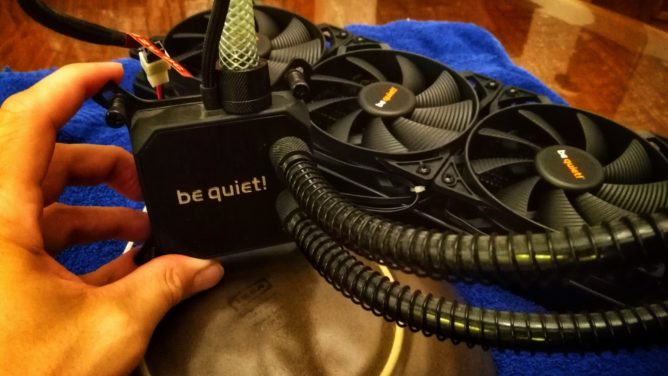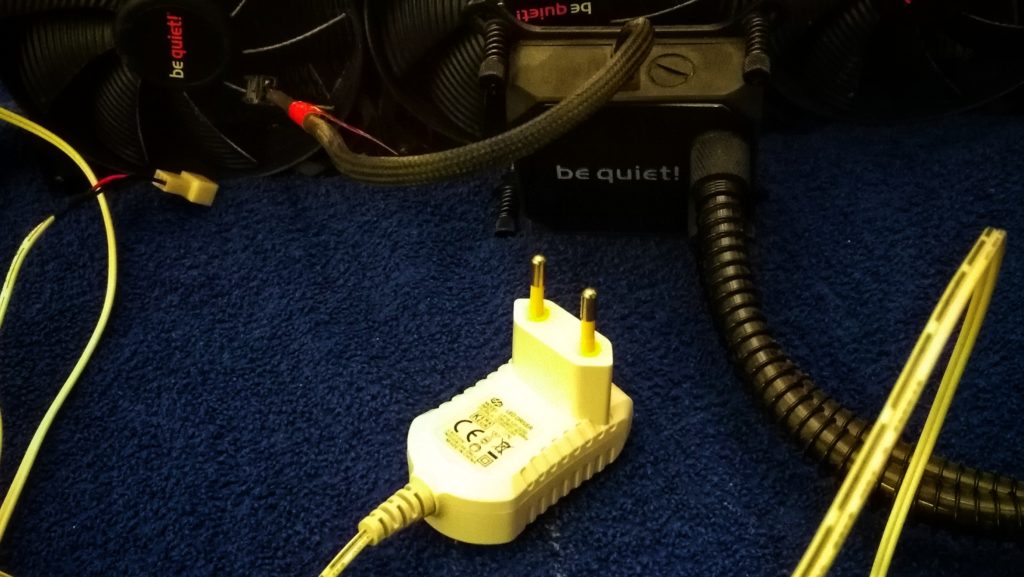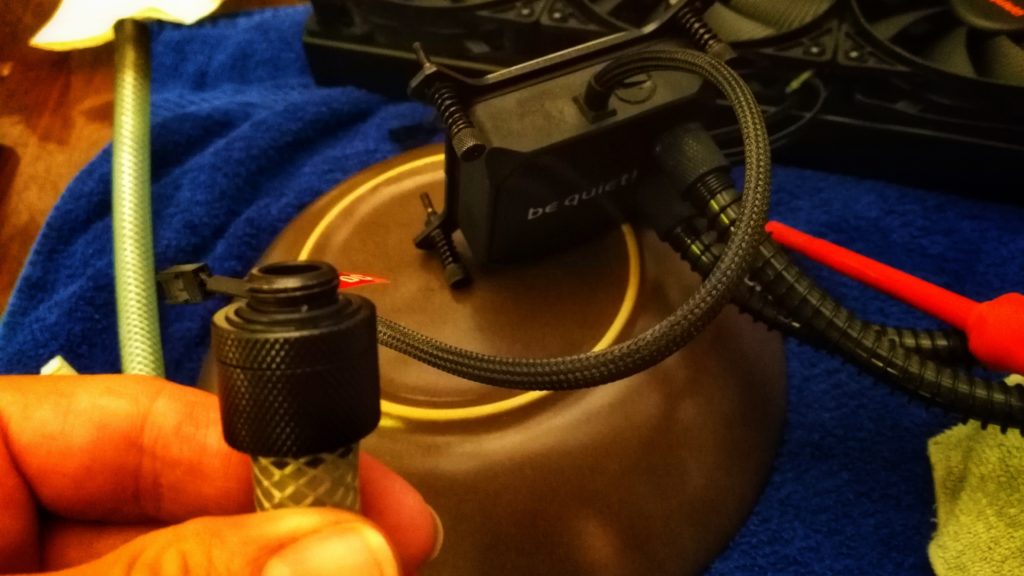When you have a water cooled computer the last thing you want to see is a message from your CPU driver telling you that it forcefully clamps down power because this means your CPU is throttling down.
This may mean that there is not enough water in your cooler and the CPU starts to overheat. Time for maintenance and a refill!
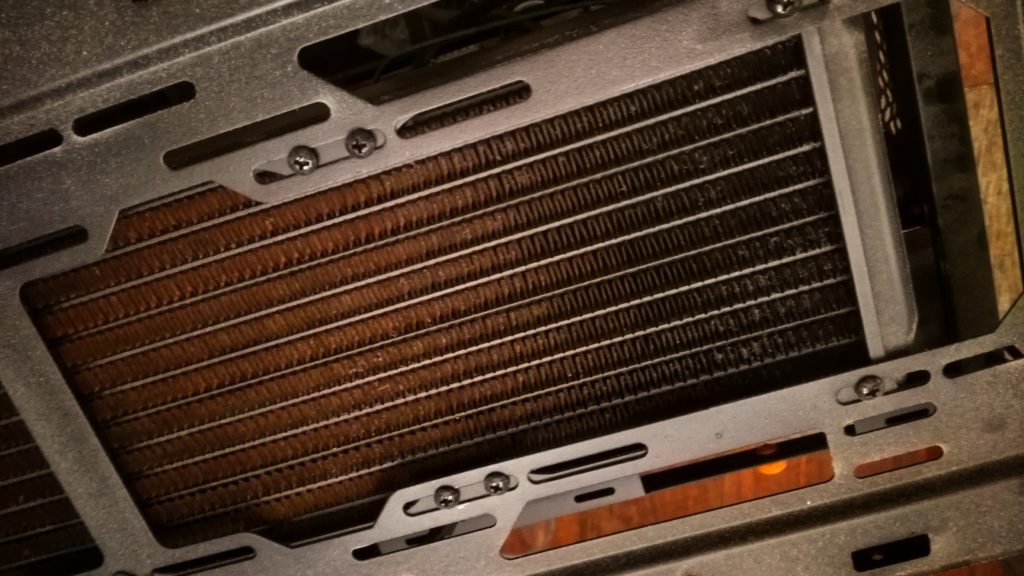
What we need for this is an external power supply or the pump, a pipe, an adapter, and some sort of filter hopper and of course water for the refill.
The pump is powered by 12V and this model should not be undervolted. Seriously, this one will break when undervolted. 12V is basically what an Ikea LED lights strip power supply will provide. You can also use another PC power supply but this is what I have anyway for a fan providing fresh air for my office.
The hose I used for the pipe is a used DN9 RAUFILAM-E from REHAU that I found in the barn. It costs about ~1 EUR per meter but you can of course buy a “special” hose from your usual PC parts mafia for 10 EUR per meter.
Distilled water should be fine. You can also purchase whatever overpriced holy water you may prefer. I won’t care.
I spare you the details how to remove the water cooler, because I assume you assembled it before and if not there are plenty of other tutorials on the net.
This pump was completely dry after opening the lid with a screw driver. I prepared this contraption held in place with a wire attached to the chandelier. So don’t do this at home. Now I started the pump and added water to the pipe until the pipe was filled.
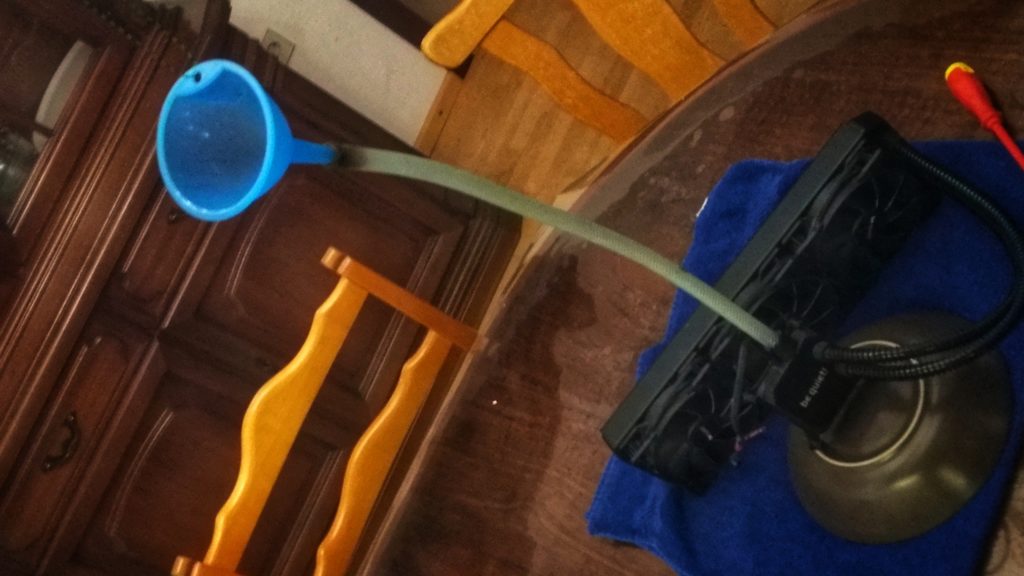
Now is the time to move and shake the radiator to get all the air out. Do not shake the pump! This takes some time. You’re done when no more bubbles appear.
Don’t forget the seal and screw in the lid while there is still water standing in the hole. Do not use force on the lid, because it breaks easily.
Make sure everything is clean and tidy (and dry) in the end because you don’t want water in your PC. This also helps to see any leaks that may spring. Don’t forget the heat sink compound later or this will be a very short adventure.
When done let the pump run for a little bit to see if any water leaks out.
When everything is assembled again make sure to run a load test and see if any leak springs.

And this is it. The system is able to hold 32°C again where it was hardly able to hold 80°C before.
And as usual, if you break your system you get to keep the pieces.
I’m not responsible for your mistakes.


